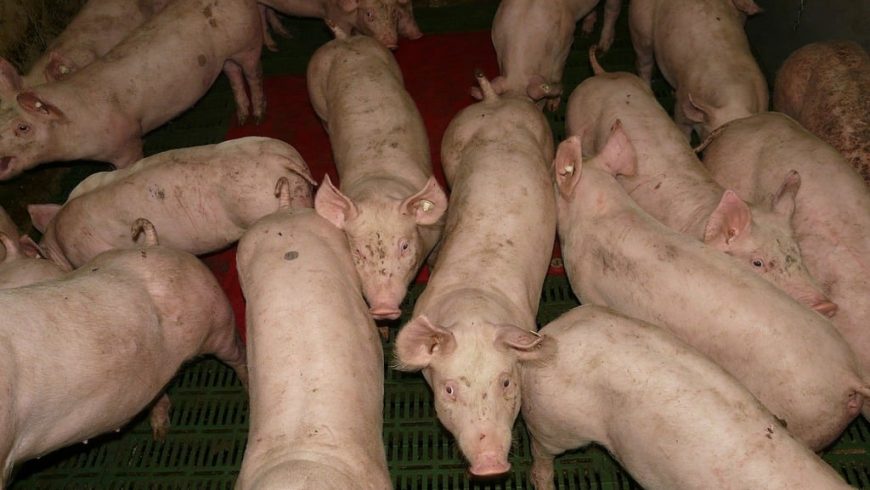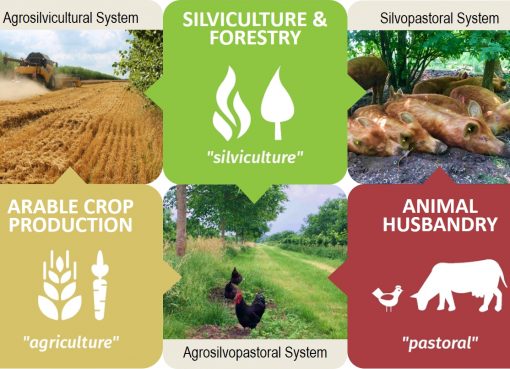Anshuman Roy
3rd year B.V.Sc. and A.H. student
College of Veterinary Science, Khanapara, Guwahati-22
The Indian pork industry has recently faced a significant threat in the form of African Swine Fever (ASF), a highly contagious and often fatal viral disease that affects domestic and wild pigs. This disease, which has ravaged pork industries across the globe, has now made its way to India, posing a grave challenge to the livelihoods of millions of small-scale pig farmers and the country’s food security. According to a study published in the journal, Frontiers in Veterinary Science, the first outbreak of African Swine Fever in India was reported in 2020 in the northeastern state of Assam, and it has since spread to several other states, including Arunachal Pradesh, Manipur, and Meghalaya (Basumatary et al., 2021). The rapid spread of this disease has led to the culling of thousands of pigs, devastating the affected farming communities and the broader pork industry.
To effectively combat this threat, India must adopt a comprehensive and multi-faceted strategy that focuses on prevention, early detection, and targeted control measures. Here are some key strategies that the country can implement:
- Strengthening Biosecurity Measures: Implementing robust biosecurity protocols on pig farms and in pig markets is crucial for preventing the introduction and spread of African Swine Fever. This includes measures such as restricting access to farms, disinfecting equipment and vehicles, maintaining proper hygiene practices, and limiting the movement of pigs between different premises (Sánchez-Vizcaíno et al., 2015). The government and the industry stakeholders should work together to develop and enforce strict biosecurity guidelines across the pork supply
- Enhancing Surveillance and Reporting: Establishing a robust disease surveillance system is essential for early detection of African Swine Fever outbreaks. Veterinary authorities should train pig farmers to recognize the clinical signs of the disease, such as fever, lethargy, and loss of appetite, and encourage them to promptly report any suspected cases to the relevant authorities (Barongo et al., 2016). Timely reporting and rapid response can play a crucial role in containing the spread of the
- Implementing Zoning and Movement Control: In the event of an ASF outbreak, the affected areas should be designated as disease control zones, with strict movement restrictions in place to prevent the spread of the virus to other The government should work closely with local authorities and pig farmers to enforce these zoning and movement control measures, ensuring that the disease is contained within the affected areas (Iglesias et al., 2016).
- Promoting Vaccination and Research: While there is currently no effective vaccine for African Swine Fever, the development of a safe and effective vaccine should be the top priority for the Indian government and research Investing in research and collaborating with international experts can help accelerate the development of a viable vaccine solution (Montoya et al., 2018). Additionally, exploring alternative control strategies, such as the use of antivirals or immunomodulators, can also contribute to the overall management of the disease.
- Strengthening Compensation and Culling Strategies: In the event of an ASF outbreak, the culling of infected and exposed pigs is often necessary to prevent further spread of the To encourage compliance and minimize the economic impact on farmers, the government should establish a comprehensive compensation scheme that provides fair and timely payments to affected pig owners (Yadav et al., 2021). This, coupled with the provision of alternative livelihood support, can help mitigate the financial burden on farmers.
- Enhancing Coordination and Collaboration: Addressing the challenge of African Swine Fever in the Northeastern states requires a coordinated effort across various stakeholders, including government agencies, veterinary experts, research institutions, and pig farmers. Fostering collaboration and knowledge-sharing among these stakeholders can help develop and implement more effective prevention and control strategies (Basumatary et al., 2021).
Socio-economic implications of ASF
The outbreak of African Swine Fever (ASF) in India’s North-Eastern states has far-reaching socio-economic consequences. The disease was first reported in Assam and Arunachal Pradesh in April 2020, subsequently it spread to Nagaland, Meghalaya, and Mizoram (Yadav et al., 2021). This rapid spread has resulted in significant pig mortality and severe economic losses for millions of pig farmers in the region.
Impact on small-scale farmers
The ASF outbreak has had a devastating effect on small-scale pig farmers in the North-Eastern states. Many farmers have lost their entire pig herds, leading to a loss of livelihoods. This situation has prompted calls for additional support from the government.
Food security concerns
The widespread loss of pigs due to ASF has raised significant food security concerns in the region. Pork is a staple food in many North-Eastern states, and the reduction in pig populations has led to a decrease in available pork products. This shortage has the potential to impact the dietary habits and nutritional status of local communities.
Trade restrictions
To control the spread of ASF, authorities have implemented various trade restrictions. These measures include issuing movement restrictions and sanctioning trade in pigs and pork products. While necessary for disease control, these restrictions have further impacted the economic stability of pig farmers and related industries in the affected areas. To address these socio-economic challenges, stakeholders have recommended several measures. These include improving diagnosis and surveillance, implementing strict biosecurity measures, raising farmers’ awareness and developing capacity for field veterinarians and commercial pig breeders on ASF management activities and good animal husbandry practices. Additionally, there is a push for boosting vaccine research and development to prevent future outbreaks and mitigate the socio-economic impact of ASF in the region.
Conclusion:
The fight against African Swine Fever in India’s North-Eastern states calls for a multi-faceted approach. Quick and accurate diagnosis, strong biosecurity measures on farms, and an understanding of the impact of the disease on communities are key to tackling this challenge. These efforts have a significant influence on protecting the pig population and safeguarding the livelihoods of farmers in the region. To move forward, it’s crucial to boost research, improve diagnostic capabilities, and raise awareness among the farmers. Putting effective control strategies into action and fostering a collaboration between stakeholders are essential steps to manage ASF outbreaks. By focusing on these areas, there’s hope to lessen the blow of ASF on the pig farming industry and ensure food security in India’s North-Eastern states.
References:
Basumatary, N.; Assandanan, J.J.; Mahato, B.R.; Pegu, S.R.; Kalita, M.C. and Sarma, H.K. (2021). African Swine Fever Outbreak in Assam, India: Epidemiological Investigations and Control Measures. Frontiers in Veterinary Science, 8: 641243.
Sánchez-Vizcaíno, J.M.; Mur, L. and Martínez-López, B. (2015). African Swine Fever (ASF): Five Years Around Europe. Veterinary Microbiology, 177(1-2): 98-115.
Iglesias, I.; Muñoz, M.J.; Rodríguez, A.; Ródenas, J.; Frias, M.T.; Borge, C. and de la Torre, A. (2016). Reproductive Ratio for the Local Spread of African Swine Fever in Wild Boars in the Early Stage of the Epidemic. Transboundary and Emerging Diseases, 63(3): e323e333.
Yadav, S.; Saxena, V.; Bhat, S.; Malik, Y.S.; Karthik, K.; Dhama, K. and Kumar, S. (2021). African Swine Fever Outbreak in India and its Significance for Other Asian Countries. Veterinary Quarterly, 41(1): 138-151.




